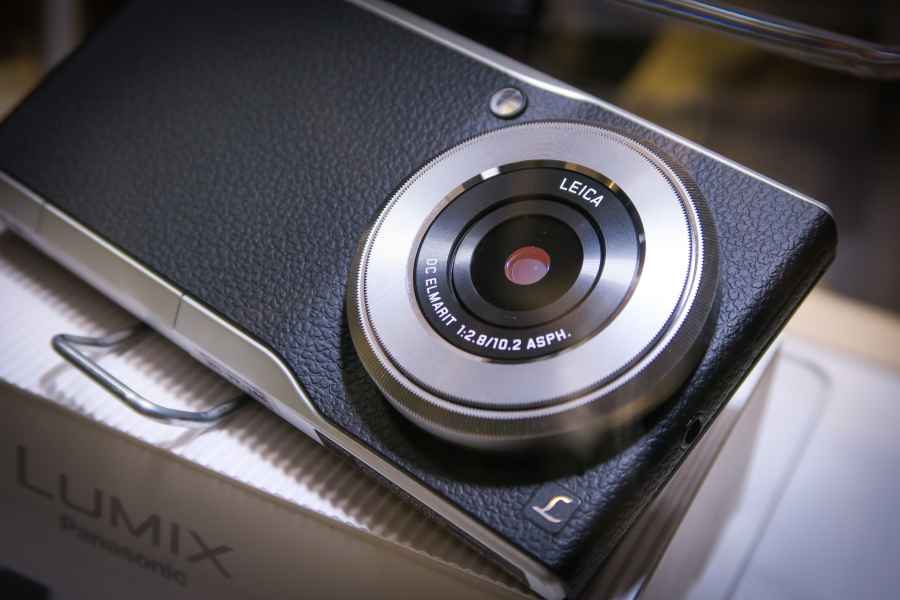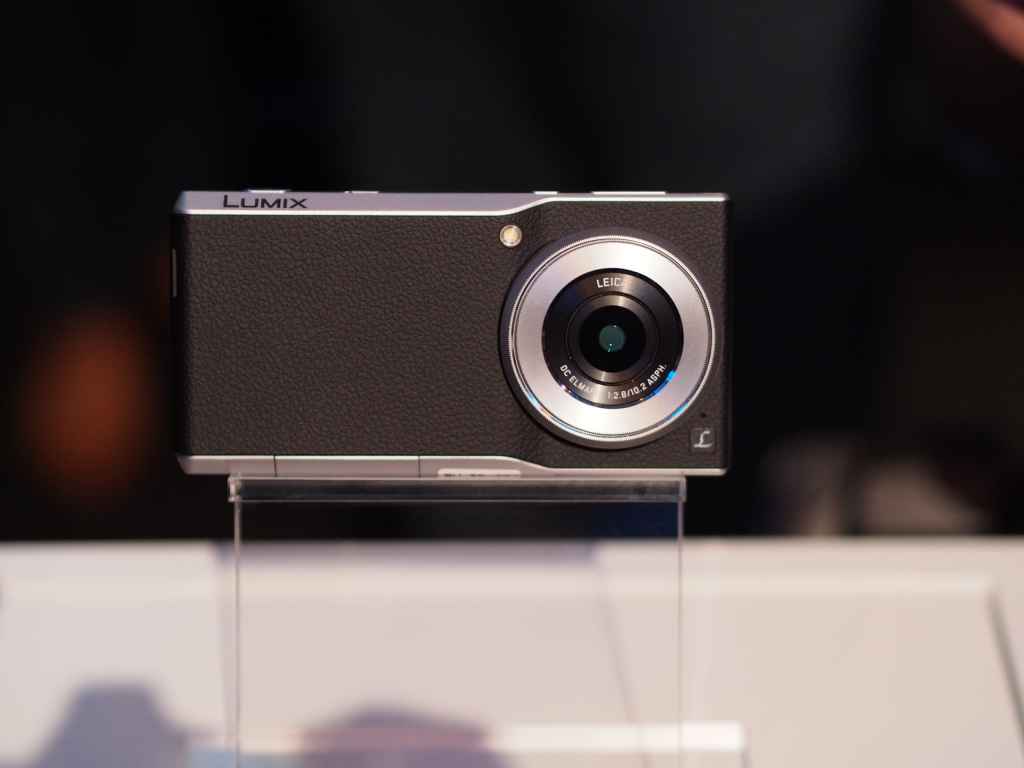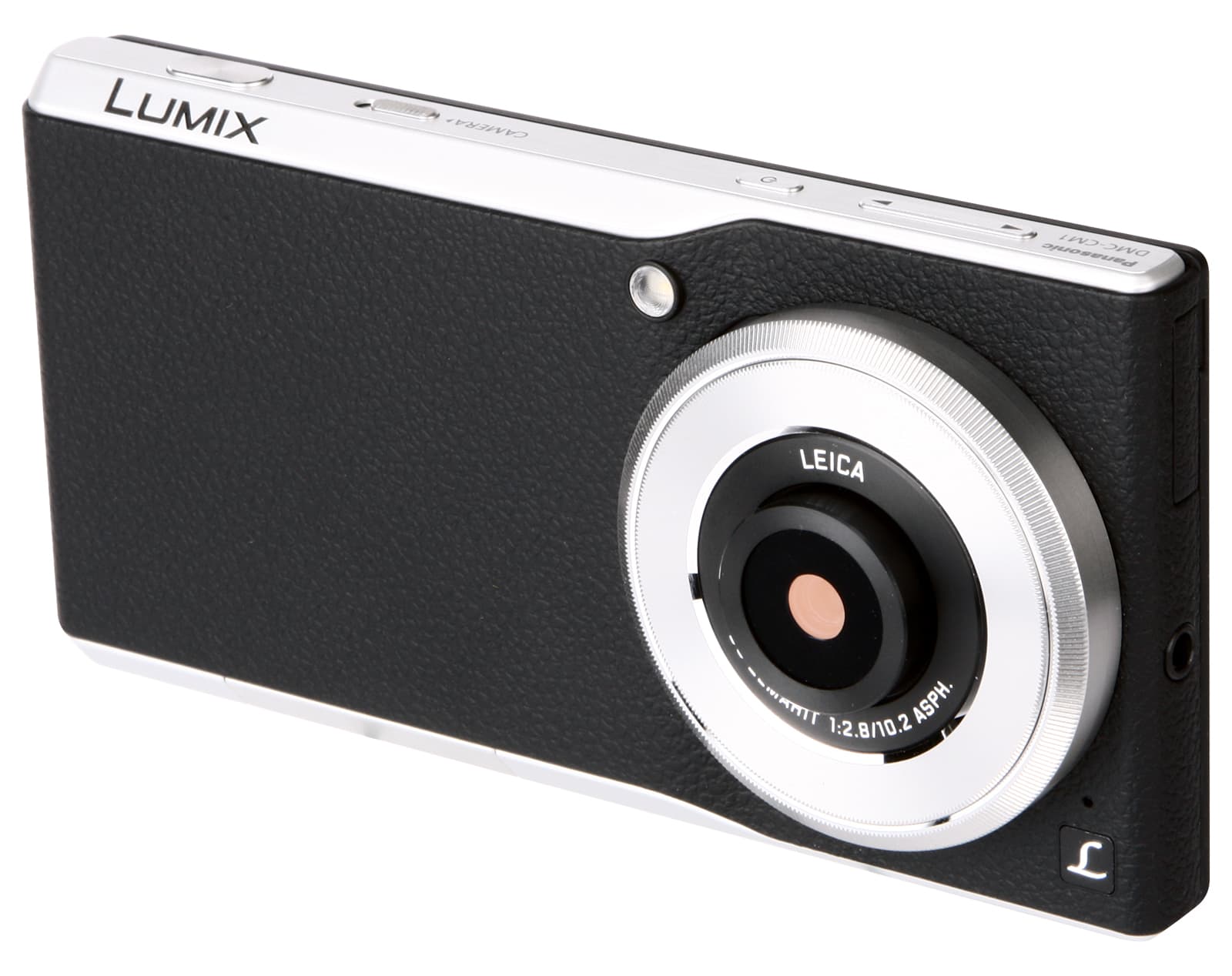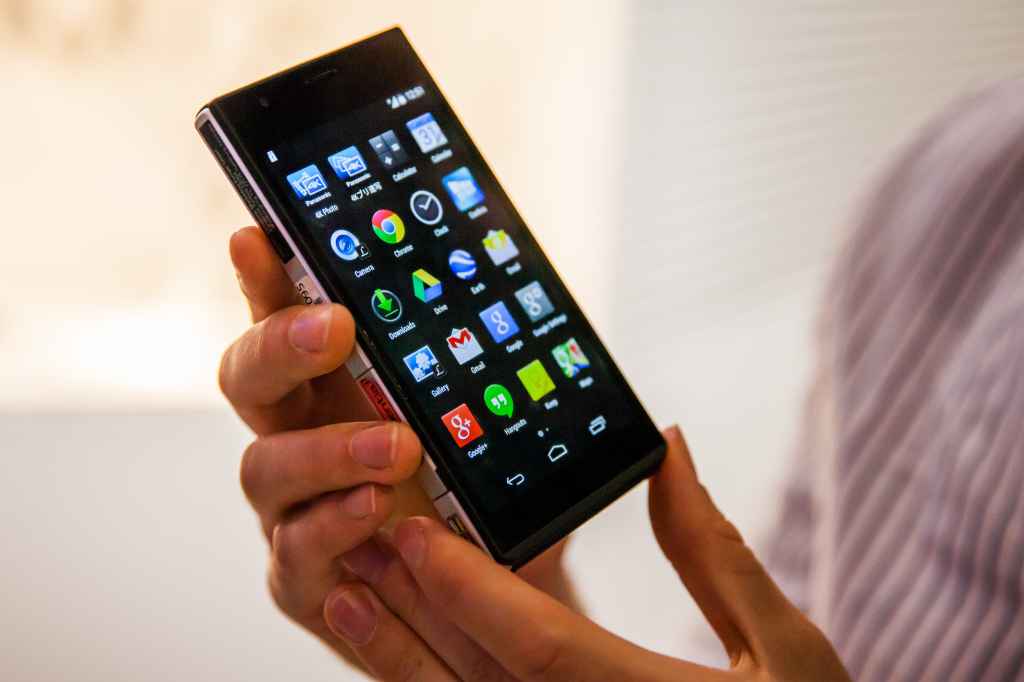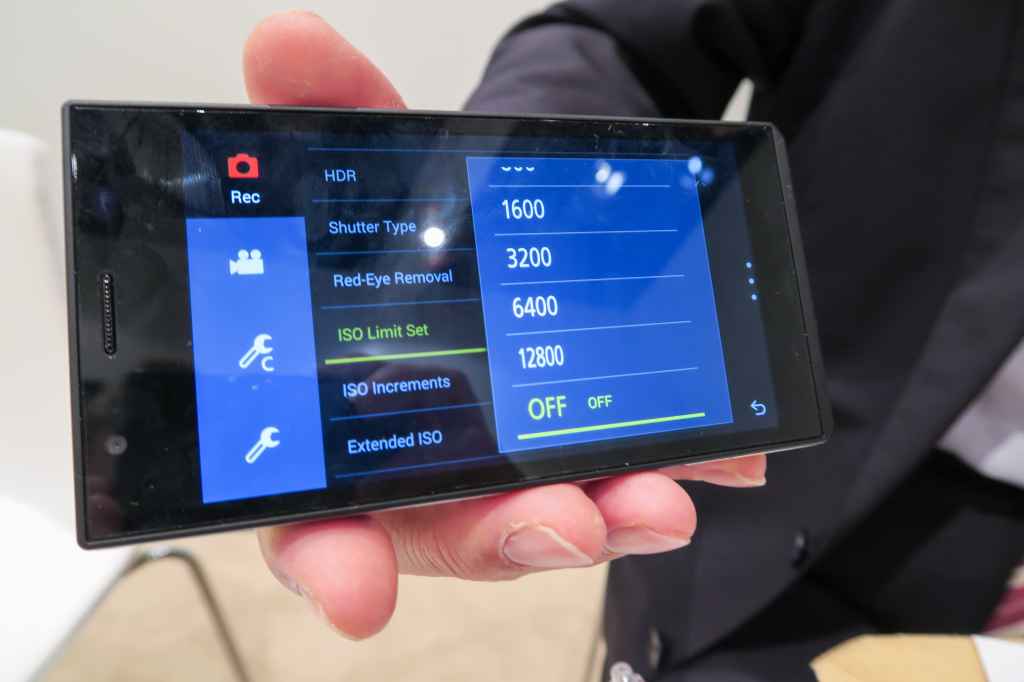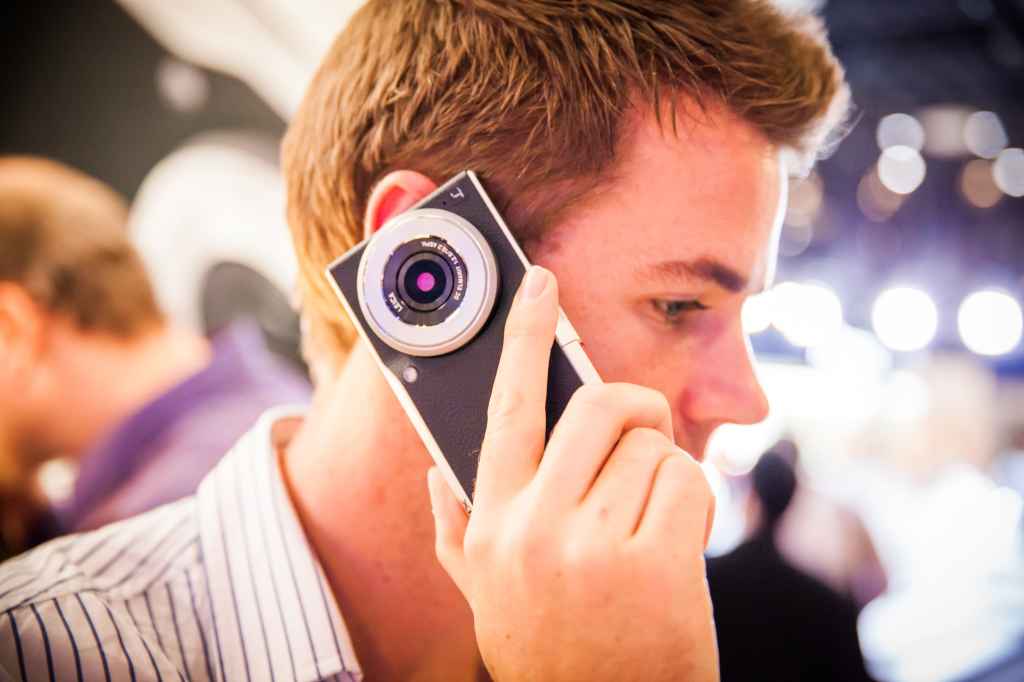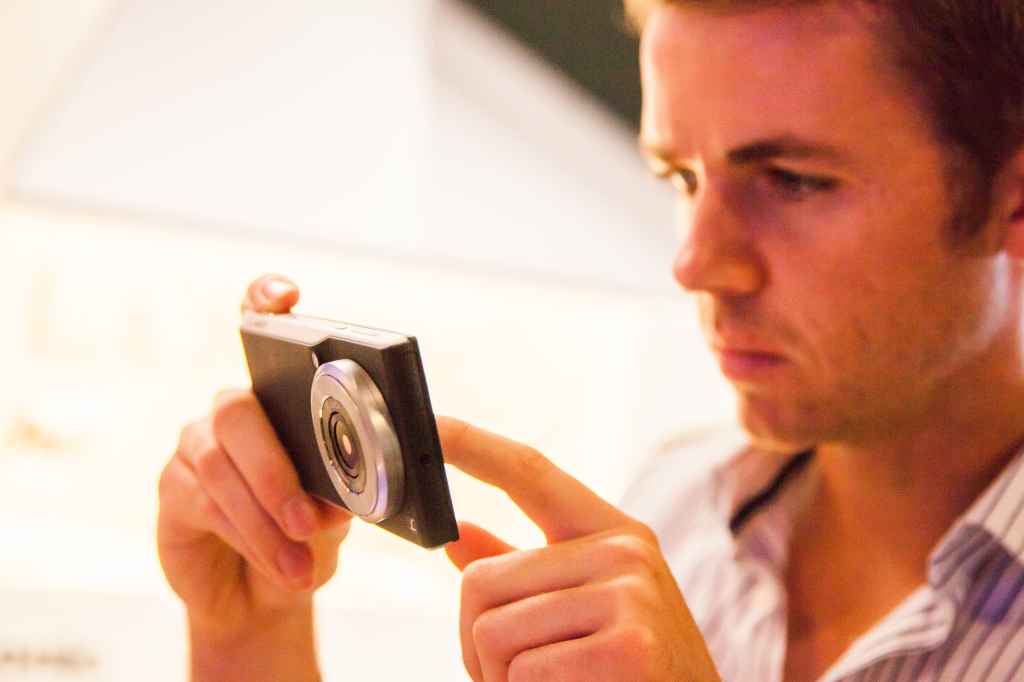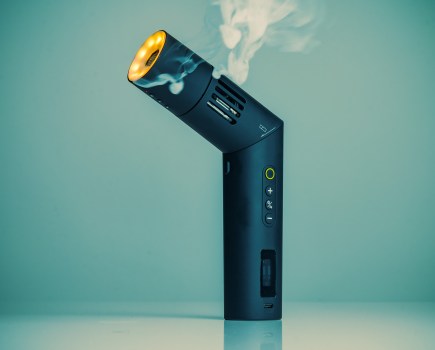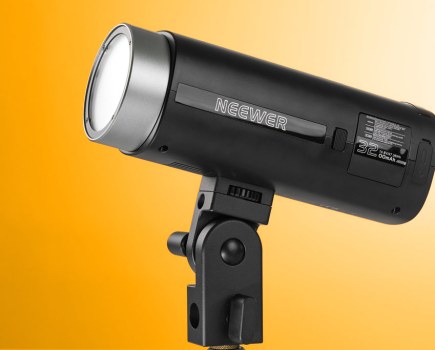Panasonic Lumix DMC-CM1 Review – At a Glance
- Large 1in sensor
- Full HD LCD touchscreen
- 28mm (equivalent) f/2.8 Leica DC lens
- 4K capture
- Full smartphone capabilities with Android 4.4 OS
- Price £799
Thanks to a string of strong camera releases that included the Lumix DMC-GH4, the FZ1000 and the LX100, Panasonic had a very positive 2014, delivering good-quality cameras in multiple categories with some class-leading innovation. Not a brand to rest on its laurels, Panasonic has now created what it calls a ‘communication camera’ – a device that marries a fully functioning Android smartphone with a slim camera. The camera features a large 1in sensor, like those found in Sony’s RX100 series and the Canon G7 X.
Panasonic released the Eluga smartphone back in 2012, but that was just a phone, with an IP57 waterproof rating being its most notable feature. The Panasonic Lumix DMC-CM1 is an entirely different prospect. Other manufacturers have attempted to create hybrid camera/phone devices in the past, with very mixed results, so how does the CM1 fare?
Panasonic Lumix DMC-CM1 Review – Features
As I’ve already mentioned, camera/phone hybrid devices aren’t anything new, which is probably why Panasonic has gone a few steps further and chosen to put a 1in sensor camera at the heart of the CM1, making its sensor almost four times the size of the 1/2.3in sensors typically found in high-end smartphones.
Rather than trying to shoehorn one device into another, Panasonic has taken a different approach with the CM1, creating two devices in their own right that simply share a physical interface. The Android half of the CM1 is powered by a 2.3GHz Quad-core processor that runs on the Android 4.4 (KitKat) operating system. It also has 16GB of built-in memory with a Micro SD slot for extra storage.
While it may not be the most spec-busting Android mobile device, the CM1 can easily hold its own against anything released by the top mobile phone makers during 2014. The camera has a dedicated imaging processor – the Panasonic Venus Engine – and features a 28mm f/2.8-f/11 Leica DC Elmarit lens directing light onto its 1in, 20.1-million-pixel MOS sensor. As standard, the camera’s ISO sensitivity range runs from ISO 125-12,800, with L100 and H25,600 available as extended settings.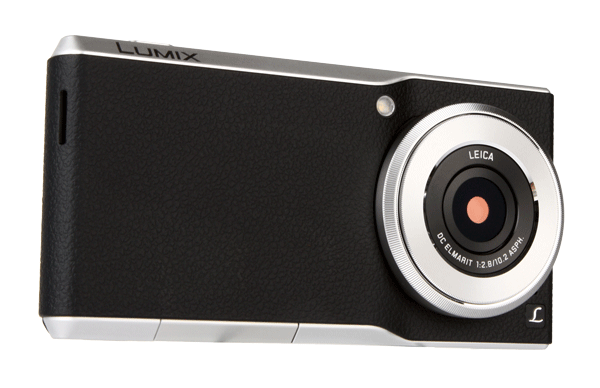 The CM1 shoots RW2-format raw files as well as JPEGs, and it is also capable of using its 4K recording capabilities to capture still images from movie footage. The device’s camera is accessed either by tapping the Panasonic app on screen, or by using the camera lever on its top-plate.
The CM1 shoots RW2-format raw files as well as JPEGs, and it is also capable of using its 4K recording capabilities to capture still images from movie footage. The device’s camera is accessed either by tapping the Panasonic app on screen, or by using the camera lever on its top-plate.
It takes less than 1sec for the device to switch between its two functions, which is quite an achievement, as the camera interface and operation run independently from the Android operating system.
Build and Handling
Panasonic Lumix DMC-CM1 Review – Build and Handling
 When the camera is switched off, the CM1 measures 135.4 x 68 x 15.2mm, making it slimmer in comparison to its nearest hybrid device competition, Samsung’s Galaxy K Zoom and the Galaxy Camera 2. Compared with other flagship Android devices, the CM1 is shorter and slimmer in width, although at 204g it is a touch heavier, but by no means as hefty as the 283g Galaxy Camera 2.
When the camera is switched off, the CM1 measures 135.4 x 68 x 15.2mm, making it slimmer in comparison to its nearest hybrid device competition, Samsung’s Galaxy K Zoom and the Galaxy Camera 2. Compared with other flagship Android devices, the CM1 is shorter and slimmer in width, although at 204g it is a touch heavier, but by no means as hefty as the 283g Galaxy Camera 2.
Panasonic has used a leather-print plastic on the face of the camera, which looks great but feels a touch cheap and does nothing to improve the gripping area. A more rubberised/textured surface would have worked better. Alternatively, the company could have used a small raised strip of rubber, placed where fingers naturally fall when shooting. There’s one other small issue that troubled me about the CM1: it has no tripod thread. I can’t actually think of a camera that doesn’t have a tripod thread, so given that Panasonic is calling this device a camera, it’s an obvious omission.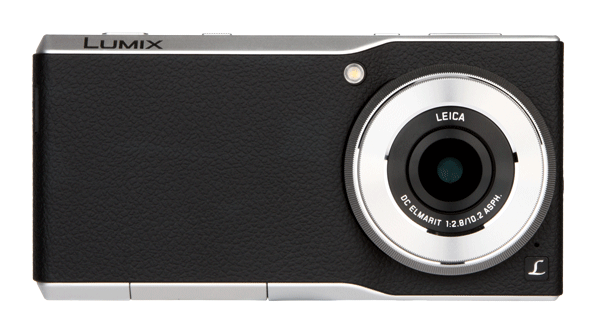
Additionally, there are a couple of physical weak points where it feels as if some corner-cutting may have taken place in order to keep down the camera weight and the cost of production, such as the Micro USB port covering, as well as the nano sim card slot mechanism and its covering. All feel vulnerable to repeated use, and my SIM managed to catch on to the inside of my sample, damaging the tray in which the card sits. As a word of warning, I would recommend caution when inserting and removing a sim card.
Camera Interface
Panasonic Lumix DMC-CM1 Review – Camera Interface
The interface is distinctly a photographic one, with a mode-selection button to the top left of the screen that opens a dial allowing you to select from intelligent auto modes, PASM, panoramic, art, scene and two custom mode slots.
To assist with composing images, there’s an eight-split or nine-grid-split guideline screen, as well as a horizontal and vertical gauge. The left of the screen also houses a histogram, but these can be switched off if you’d prefer.

The device’s 4.7in full HD 6.22-million-dot LCD screen is bright and does a great job of providing accurate exposure preview during composition.
On the right-hand side is a digital shutter, quick-menu button and video-record function, but the best part of this interface is the simple way in which Panasonic has implemented manual controls such as shutter speed, ISO, sensitivity, white balance and exposure compensation. Each setting can be touched and controlled either on the screen or by using the manual control wheel on the front.
The only other physical camera control on the CM1 is the shutter button, which has an assured half and full press. I like the inclusion and position of the shutter button, given that this a device that also houses a smartphone. Using it with two hands offers improvement in stability, as it’s not an easy device to shoot with in the landscape orientation when using only one hand. A refined grip and better texture of faceplate material could benefit in these respects.
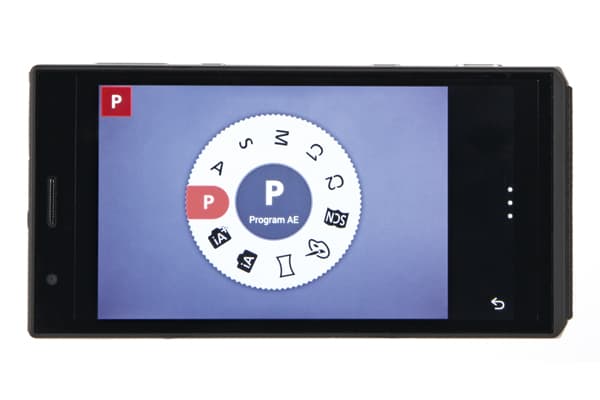
Smartphone Performance
Panasonic Lumix DMC-CM1 Review – Smartphone Performance
For those considering the CM1, there are a couple of fundamental questions it needs to answer. Does it replace my phone? Can it take pictures better than the best smartphones available?
As an Android device, it matches the performance and specs of many of the mid-range devices currently on the market. Running Android 4.4 with a custom Panasonic UI, the CM1 has a Snapdragon 801 2.3GHz Quad-core unit, keeping it in touch with the iPhone 5S, Samsung Galaxy Alpha, LG G3 and the Sony Xperia Z2 in terms of processing power.
The icons are large and avoid making the interface look overly cluttered. It also has minimal manufacturer bloatware, although Panasonic has developed some 4K camera applications that are currently exclusive to the CM1.

I was impressed with the operational speed of this device and you get the feeling that Panasonic’s approach places much more emphasis on function over style compared to the slightly more sleek and modern UIs from Sony and LG.
I swapped my regular Android handset for the CM1 while writing this review, and was pleasantly surprised by the battery performance. It charges quickly and, after a full day of regular use that included checking my social media feeds, responding to messages and taking pictures, I would get home with around 20% of battery life remaining.
Switching between applications is smooth and the handset handled multimedia functions well. Overall, in my experience, as an Android device, the only significant difference between the CM1 and other mid to top-of-the-range Android devices is that this device has a large-sensor camera built in.
Camera performance and image quality
Panasonic Lumix DMC-CM1 Review – Camera performance and image quality
When tackling the second key question facing the CM1, I have to begin with a disclaimer: having a larger sensor doesn’t automatically mean it will take better pictures. There are other things that make a camera great for taking pictures, including pixel size, signal processing, image processing and stabilisation. Even the handling can have a significant impact on the camera’s ability to take pictures.
The CM1 has clearly been developed by a camera specialist who has got the fundamentals spot-on. Focusing is reasonably quick when using the physical shutter button as well as the touchscreen. Overall, the metering and exposure performance are good on the CM1.
The lens is impressive, too, giving consistently sharp images into the corners of the frame, even at f/2.8. However, the exposed front element can pick up fingerprints quite easily so it needs to be kept clean for best results.
The CM1 is one of only a small number of smartphone-enabled devices that can shoot both raw and JPEG photos, and looking closely at the images it’s immediately clear that this device’s camera is more than capable.
When held steady and shooting relatively still or posed subjects, the camera captures a high level of detail throughout the frame. AWB performs intelligently and colours are rendered naturally and manage to be vibrant without appearing unnaturally saturated.
The advantages that the CM1 has really show when comparing its images to those produced by the iPhone 6 Plus. Side-by-side comparisons reveal that the CM1, with its 1in sensor, is in a different league to that of current iPhones. Even if you only compare JPEG images, it’s clear that the CM1 can capture a greater level of image detail.
The gap grows wider still when you open the camera’s .RW2 raw files and start to recover usable detail in the shadows, making it possible to create images with a significantly more impressive dynamic range than those produced by some top smartphones.
The omission of optical image stabilisation is noticeable and means that some of the gains of a larger sensor are lost because high ISO sensitivities are needed to keep shutter speeds fast to avoid camera shake.
Image Quality Lab Results
Panasonic Lumix DMC-CM1 Review – Image Quality Lab Results
As we have seen with other 20-million-pixel, 1in-sized sensors, the Panasonic Lumix DMC-CM1 provides a good balance between resolution and noise. This is thanks to the size of the sensor being far larger than that found in a standard compact or smartphone camera. The larger surface area allows for more photosites, but without compromising on their size, meaning that the sensor can gather a lot more light compared to smaller units of a similar resolution.
As can be seen in our sample images, the performance is impressive at each given sensitivity setting, especially when compared to other smartphone cameras currently available. Compared to the likes of the iPhone or Samsung Galaxy or Sony Xperia phones, the CM1 is certainly ahead, and it can also match the quality of the other cameras with 20-million-pixel, 1in sensors.
Dynamic Range
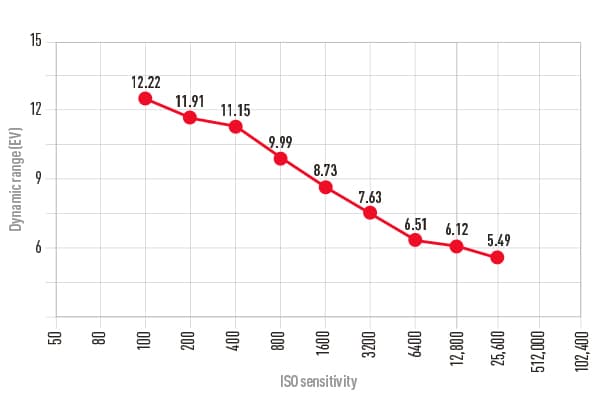 For a smartphone, the CM1 has an extremely impressive dynamic range of 12.2EV. Obviously, the larger photosites of the 1in sensor is what helps to enable this range, which is effectively the same as that of the Sony Cyber-shot DSC-RX100 III and the Canon PowerShot G7 X. By ISO 800 the dynamic range drops to just below 10EV, so there is plenty of shadow detail in images up to this setting. From here, though, the dynamic range of the camera drops and is just 5.5EV at its maximum sensitivity.
For a smartphone, the CM1 has an extremely impressive dynamic range of 12.2EV. Obviously, the larger photosites of the 1in sensor is what helps to enable this range, which is effectively the same as that of the Sony Cyber-shot DSC-RX100 III and the Canon PowerShot G7 X. By ISO 800 the dynamic range drops to just below 10EV, so there is plenty of shadow detail in images up to this setting. From here, though, the dynamic range of the camera drops and is just 5.5EV at its maximum sensitivity.
Resolution
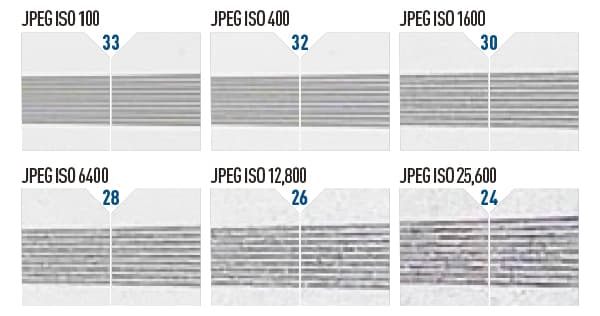 With a 20.1-million-pixel, 1in-sized sensor, the CM1 resolves up to 3300l/ph on our chart at ISO 100. When shooting raw images there is slightly more clarity and sharpness, although little more in terms of definition. As the sensitivity increases, the sensor and processing do a good job of maintaining the high resolution, and even up to ISO 1600 the resolution is around the 3000l/ph mark. Obviously noise affects the higher sensitivities, and ISO 12,800 and 25,600 show a drop in resolution, but it is still reasonable.
With a 20.1-million-pixel, 1in-sized sensor, the CM1 resolves up to 3300l/ph on our chart at ISO 100. When shooting raw images there is slightly more clarity and sharpness, although little more in terms of definition. As the sensitivity increases, the sensor and processing do a good job of maintaining the high resolution, and even up to ISO 1600 the resolution is around the 3000l/ph mark. Obviously noise affects the higher sensitivities, and ISO 12,800 and 25,600 show a drop in resolution, but it is still reasonable.
Noise
Both raw and JPEG images taken from our diorama scene are captured at the full range of ISO settings. The camera is placed in its default setting for JPEG images. Raw images are sharpened and noise reduction applied, to strike the best balance between resolution and noise.
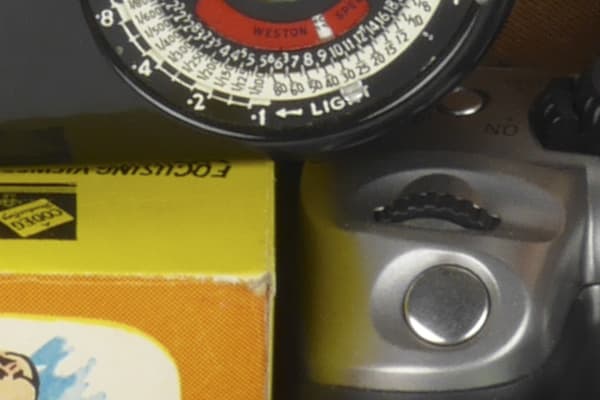 ISO 100
ISO 100 ISO 200
ISO 200 ISO 400
ISO 400
 ISO 800
ISO 800
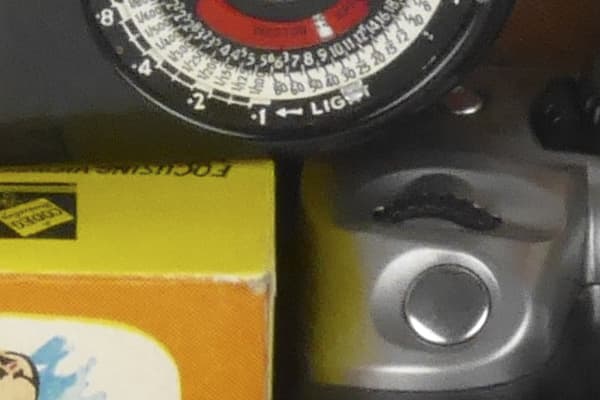 ISO 1600
ISO 1600
 ISO 6400
ISO 6400
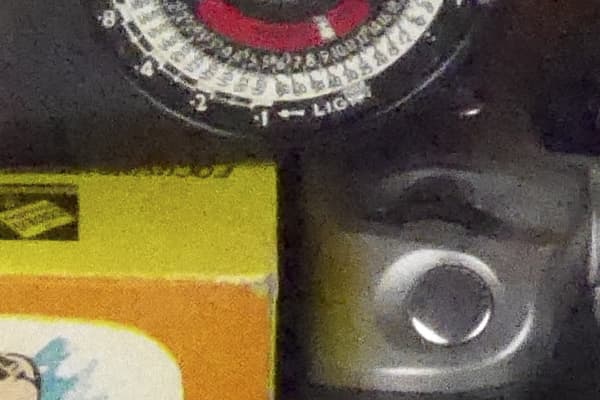 ISO 12800
ISO 12800
 ISO 25600
ISO 25600
With the sensor of the CM1 being larger than that of most compact cameras, let alone smartphone cameras, you would expect to see excellent noise control – and the camera doesn’t disappoint.
At ISO 100 and 400 there is virtually no difference in the shadow areas of images, with no discernible noise. In fact, the noise is controlled so well that even at ISO 1600 little colour or luminance noise is available in shadow areas.
At ISO 6400 there is a little smoothing in JPEG images, which helps to keep luminance noise under control.
However, at ISO 12,800 some luminance noise, and some smoothing from colour noise reduction is present, which removes a lot of detail resolution.
At the maximum setting of ISO 25,600, shadow areas suffer from both luminance and shadow noise, with the shadow areas taking on a slight purple hue.
Verdict
Panasonic has achieved something special with the Lumix DMC-CM1. It represents a new frontier for smartphone technology and the camera marks a clear improvement on what we’ve seen from the leading smartphone manufacturers.
Of course, there have been some compromises in order to keep the size of this device down. Some of those compromises (no optical image stabilisation) are more of an issue than others (lack of grip). But this model is only mark 1, and for the most part, it has been executed extremely well. The integration of smartphone and camera is the most convincing and seamless experience we’ve seen, and it surpassed our expectations.
If Panasonic can successfully deliver full smartphone functionality in a phone-a-like camera such as the CM1, it can’t be much of a leap to enable some of their other premium camera lines with this level of connectivity. It’s an exciting thought.
Wi-Fi and other connectivity options are already becoming standard for digital cameras. Now that Panasonic has demonstrated an effective way of producing a smartphone-enabled camera, I wouldn’t be surprised to see even more sophisticated communication cameras coming to market over the next couple of years. I also wouldn’t be surprised to see sensor size becoming the new megapixel race for smartphone manufacturers.
Can the CM1 replace your smartphone? The answer is yes. Is it capable of taking better pictures than the current best smartphones available? Again, the answer is yes, in some circumstances, it definitely is. For me, however, buying the CM1 comes down to whether or not you can afford it, and whether or not you are lucky enough to actually get your hands on one.


